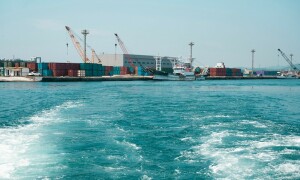Energy and the environment are in transition. Technology is changing the way we explore, develop, and generate our energy resources, and rapid developments in the energy sector hold great promise for all of us. Unfortunately, at the same time, climate change threatens our very way of life.
Global leaders, including President Barack Obama and Prime Minister Nawaz Sharif reached an historic agreement at the UN Climate Conference in Paris last December. It articulates an ambitious vision for keeping the global temperature rise well below two degrees and sends a direct message to the global marketplace that reducing carbon in our economies is the prevailing trend and the future has arrived.
The question now is how to put the climate agreement's vision into practice. As the US Secretary of State John Kerry said: "The solution to climate change is not generations away. It is not that difficult to comprehend. It is not a mystery waiting to be solved. It is, put quite simply, energy policy - clean energy choices."
One approach to revising our energy policies is to adopt clean energy technologies, which are already commercially available. As the cost of such technology continues to fall rapidly, more companies are seeing it as a viable alternative to traditional energy sources. Wind and solar have emerged as mainstream, cost-effective business tools. They create more profitable bottom lines and thousands of good-paying jobs. Clean energy technologies are advancing the resilient growth of developing countries, and can help lift millions out of poverty.
But achieving the objectives of the Paris Agreement will require more than new technology; it will also require investment in renewable resources. According to the International Renewable Energy Agency, to keep climate change below a two degree increase, global investments must be scaled up to Rs 52 trillion ($500 billion USD) per year in the years leading up to 2020, and reach Rs 94 trillion ($900 billion USD) annually in the ten years leading up to 2030.
In the United States, we are working hard to address climate change, promote clean energy and energy efficiency, and drive innovation in clean energy technologies. In August, President Obama laid out a plan to accelerate our transition to a clean energy economy based on a goal of increasing the share of non-hydro renewables in the US electricity generation mix. And in December, at a time of highly constrained fiscal budgets, the US Congress voted to extend tax credits for solar and wind power projects.
In Pakistan, there has never been a better time to pursue clean energy technology solutions to meet energy security and climate change goals. The falling cost of renewables, as well as technological advances in energy storage and in distributed energy systems - such as solar panels on home roofs - represent a huge opportunity. Pakistan could bring clean and sustainable energy to the 30% of the population that currently lacks access to the grid, and do so at a lower cost than extending the national grid to less densely populated areas of the country. Commercial-scale wind and solar projects have begun to come online in Punjab and Sindh. The success of these projects is proving the viability of Pakistan's clean energy market and shoring up investor confidence. These efforts could be catalysed by creating the legal, regulatory, and policy frameworks necessary to attract additional private sector investment.
The United States is supporting Pakistan in these efforts. In October 2015, President Obama and Prime Minister Sharif announced the US-Pakistan Clean Energy Partnership, which aims to facilitate private sector investment in clean energy to fuel Pakistan's economic growth. Last month, Pakistan's Water and Power Minister Khawaja Asif and Petroleum and Natural Resources Minister Shahid Khaqan Abbasi met with senior US officials to co-ordinate their efforts. We look forward to working with Pakistan on a robust carbon reduction plan as part of the Paris Agreement, and to work this year toward an amendment to the Montreal Protocol to begin the phase down of hydrofluorocarbons, a greenhouse gas and major contributor to global warming.
The choices Pakistan makes today in terms of its energy mix will have a major impact for years to come on economic growth, energy security, and the country's resiliency to the effects of climate change. There has never been a better time to start on the path to a clean and sustainable energy future.
(The writer is the US Ambassador to Pakistan)
BR100
12,702
Increased By
113.8 (0.9%)
BR30
38,258
Increased By
378.2 (1%)
KSE100
118,383
Increased By
1067.8 (0.91%)
KSE30
36,395
Increased By
278.8 (0.77%)






















Comments
Comments are closed.